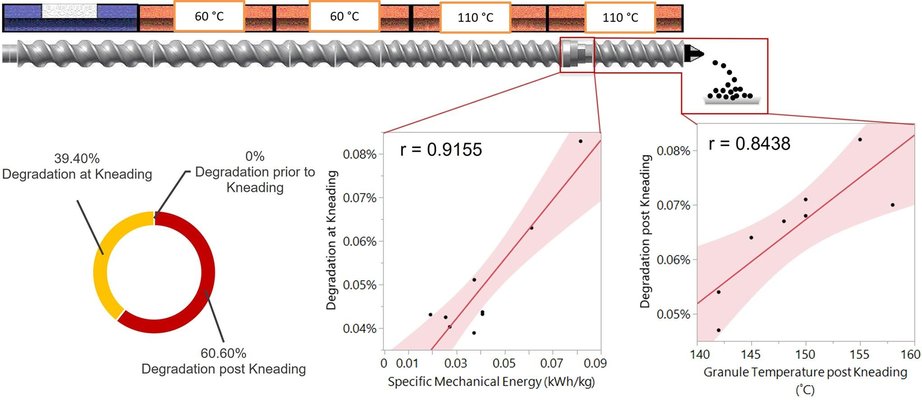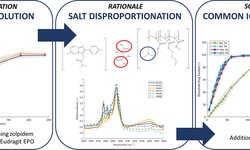Scientific papers
Exploring the impact of the twin-screw melt granulation process on the chemical stability and process-induced physicochemical alterations of a drug, we utilized a miscible model formulation comprising 80% gliclazide (GLZ) and 20% hydroxypropyl cellulose. No degradation occurred in the conveying section leading to the kneading element. Approximately one-third of the GLZ degradant was generated in the kneading section, while the remaining two-thirds were produced in the conveying section post-kneading and during the cooling process outside the barrel. A notable correlation was observed between the overall degradation and the temperature of the granules at the barrel exit.
In the kneading section, the degradant content exhibited the strongest correlation with the specific mechanical energy. Higher specific mechanical energies led to further reduction in the size of GLZ crystals, causing more surface defects. In the post-kneading element section, GLZ degradation correlated most significantly with the granule temperature measured at the kneading section. This understanding of drug degradation during twin-screw melt granulation provides valuable insights for developing processing strategies aimed at preserving drug stability both during and after processing.

Comments
No comments posted yet.
Add a comment















